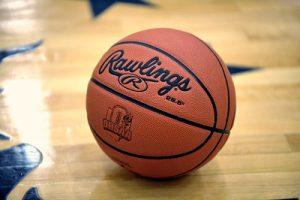 This is the 7th post in our series in our Definitive Guide to Improving Ball Handling be sure to check out the other episodes in the series … (Intro, Why and When to Dribble, Dribbling Mechanics, Mastering Skills, Measuring/Tracking Improvement, All the drills) …
This is the 7th post in our series in our Definitive Guide to Improving Ball Handling be sure to check out the other episodes in the series … (Intro, Why and When to Dribble, Dribbling Mechanics, Mastering Skills, Measuring/Tracking Improvement, All the drills) …
We believe that there is a time and a place for most drills because all basketball players that start training are starting from a different place. Some drills make sense for beginners but not for advanced players. Also, some drills that are good for beginners can be modified to make sense for advanced players. As is true for just about anything these days, the internet is filled with some strong opinions on some drills being worthless… so here we are going to talk about some of the drills that have a bad reputation… sometimes it isn’t a fair reputation, other times it can.
Before we dig in… I’ll give you one of our biggest pet peeves. There are a lot of popular internet basketball skills trainers which seem to mostly focus on doing dribble move after dribble move, stringing them together into combo moves…essentially just creating a mindset for 1-on-1 and isolation basketball…. You also see a lot of this at different gyms, open runs, and parks…. But the reality is… most baskets in college and the NBA do NOT come from an iso play and do NOT come after multiple dribbles. We talk a little more about this later, but I wanted to clear up now that is important to not fall in love with repetitive iso movements, but rather to refine your skills first.
In Episode 4 we talked a little about the best way to practice in order to improve, but here we go into more detail.. The drill should almost always be challenging to be effective (but not so hard that you can’t do it at all) … Always progress and increase difficulty, as you get better. This means, if you are a very good ball handler, going through motions of a one-ball, stationary, figure 8 dribble… that isn’t worth your time. Drills must be difficult enough that you are in jeopardy of losing the ball or losing control… this is how you push to get better.
Some overall thoughts on important ball handling drills
Some drills aren’t necessarily “game situation” but they are okay to do if your only option is to practice by yourself. You will hear some coaches say practicing by yourself or practicing stationary dribbling is a waste of time (which it can be if you are an exceptionally good ball handler). But if you are a younger player or are just developing your skills these drills are GREAT for building a foundation. They can help you build ball-handling muscle memory, build the ability to dribble with your head up, and developed hand speed and strength. It is definitely okay to do these drills and there are ways to make stationary drills very difficult, even for an excellent ball-handler. The key here goes back to the effort someone puts into the drill. These can be good as long as the plyer is challenging themselves (pounding the dribble harder and faster) and not just “going through the motions”.
Always work toward having your head/eyes up as much as possible. This is one of the easiest ways to make a drill more difficult. Keeping your head up can be very challenging, especially as you are learning a drill. If you can keep your head up in practice, you will be able to keep your head up in games and you will be able to see your teammates.
You must practice handling the ball while moving at high speeds and when stopping and starting. Basketball is played while moving. Fast breaks, press breaks, and driving to the hoop all require moving fast and changing speeds. Your practice needs to incorporate this.
You must practice handling the ball with pressure. This can mean dribbling in a game situation or you can put yourself in a situation where it is HARDER than a game situation. An example would be if you have another player continuously hacking, fouling, and pushing you to try to steal the ball or make you lose control.
Understanding game situations is important so you can understand when to use dribble moves. It might be just as important to understand WHEN to use a dribble move as it is to be able to DO that dribble move.
It is very valuable to simulate being “trapped” or double-teamed by defenders. This is something that takes a lot of skill and repetition to get good at. Take the time to set-up some valuable drills where a strong trap or double occurs.
Controversial Drills … the good and the bad
Somewhat shockingly, yes. It seems people have a lot of criticism for different ball handling drills. The truth is, MOST of these drills are useful in certain situations… but not useful for everyone in all situations. Let’s dive in to some drills that are often the subject of debate
Tennis ball drills
Tennis ball drills DO have merit (but aren’t the most important either)
It seems a little crazy how passionately people argue about this one. Some coaches and trainers seem to frame these as super important while some others criticize them as incredibly stupid. Just like many things, they are useful if used in the right way.
The good:
A drill with an added stressor or obstacle (like catching and/or throwing a tennis ball) helps develop the ability to execute a task while also handling the obstacle. So when a player does these drills they are developing an ability to handle the ball and have their head up, see their teammates, and read the defense.
Managing complex movements where multiple things are going on also develop coordination. The ability to throw and catch a tennis ball while dribbling requires coordination that might not yet be present in the athlete.
Hand & dribble speed can also improve with these drills. If the drill is structured so that it is difficult it will force the ball handler to move their hands quickly and speed up their dribble.
The bad:
These can get a little gimmicky, they don’t account for any pressure, and they are largely done while stationary (although they can be done while moving). These drills aren’t a miracle cure. They shouldn’t be done at the expense of game speed drills or drills with pressure.
Stationary drills
Secondary to tennis ball drills, stationary drills are often criticized. However, once again they have a purpose.
The good:
I think stationary drills are particularly useful for younger/inexperienced players that are still developing the basics of ball handling, coordination, and muscle memory.
Stationary drills can be made very difficult if you dribble hard enough or make the dribble complex enough (such as dribbling with only one hand back and forth behind the back).
These can also be a good warm-up to get ready for a practice or a workout.
The bad:
Like the tennis ball drill… these don’t factor in any pressure or movement. It is also very easy to resort to “going through the motions” just dribbling for the sake of dribbling. Sometimes stationary drills are done just with low dribbles while the player is bent over and that really isn’t the way people dribble in a game. That low dribble is okay while working coordination, but for more experienced players, they should have an upright posture and use a higher pound dribble.
Stringing together multiple dribble move combinations
These drills are often memorized patterns when either stationary or moving (sometimes through cones) the player makes multiple moves. For example… crossover at one cone, then through the legs + crossover at the next one, followed by inside out dribble + pull back. Sometimes these are also done combined with shooting where a player makes multiple dribble moves then shoots a pull-up jump shot (almost like they are creating off the dribble).
The good:
Combinations can be done at game speed with game intensity which is critical for ball handling practice.
It can be useful to combine these realistic moves with a shot or finish to further simulate game situation.
The bad:
These can sometimes lead to players getting used to making multiple moves and playing an isolation style of basketball. This isn’t a good habit to get into. As mentioned earlier… most points do not come off of multiple dribbles. We like to teach using your dribble when you need to use the dribble, not mostly for iso plays. You don’t want to become a player that pounds the ball, over dribbles and makes a ton of moves without going anywhere. Over dribbling rarely fits into a team’s offense AND your teammates end up standing around.
This is the 7th post in our series in our Definitive Guide to Improving Ball Handling be sure to check out the other episodes in the series … (Intro, Why and When to Dribble, Dribbling Mechanics, Mastering Skills, Measuring/Tracking Improvement, All the drills)
photo credit: K.M. Klemencic
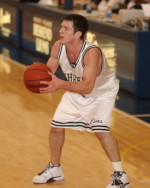 He has 25 years of experience playing basketball, training basketball players, and coaching basketball. The World of Hoops provides intelligent and intense basketball training to take basketball players to the next level.
He has 25 years of experience playing basketball, training basketball players, and coaching basketball. The World of Hoops provides intelligent and intense basketball training to take basketball players to the next level.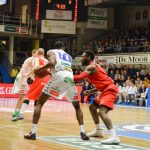 The Pivot Foot – Which Foot to Use – Permanent vs. Switching
The Pivot Foot – Which Foot to Use – Permanent vs. Switching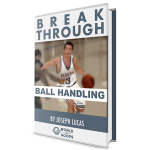 A Great Investment – Breakthrough Ball Handling
A Great Investment – Breakthrough Ball Handling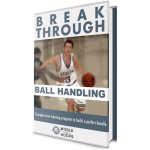 Ball Handling Ep. 9 – Breakthrough Ball Handling
Ball Handling Ep. 9 – Breakthrough Ball Handling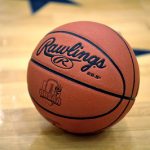 Ball Handling Improvement – The Proof
Ball Handling Improvement – The Proof




Speak Your Mind